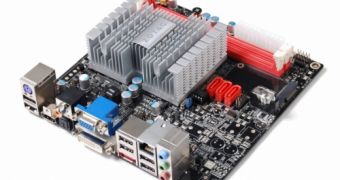Motherboard maker MSI has recently announced that it will now provide a number of its products with an integrated Power eSATA connector, which will basically eliminate the need for an extra power connector for any eSATA-compatible devices. With the announcement, MSI has also introduced the first AM3 motherboard that uses the new Power eSATA connector, which will also be featured on a number of the company's portable computer systems.
The eSATA interface has been designed to allow computer users to take advantage of the faster connection speeds of the SATA interface for external devices, which normally use a USB connection. Unlike USB connections, the current eSATA devices require an external power source, as the power can't be delivered through the SATA cable. However, in early 2008 a new standard was announced by the Serial ATA Internal Organization (SATA-IO), which would enable external devices to draw power over the cable that connects to a PC. This new standard was called Power Over eSATA and is now featured on a number of MSI's latest products, under the name of Power eSATA.
The Taiwanese company announced that some of its notebook PCs and an AM3 motherboard would boast the Power eSATA connector, enabling users to take advantage of the faster SATA interface, without having to use an additional USB port for powering up a certain eSATA device. The MSI 790FX-GD70 mainboard is the one that will feature Power eSATA and will allow users to build an AMD-ready PC that can be used with the OCZ Throttle eSATA drive. Additional products that incorporate the new feature include the company's gaming-ready GX620, GX720 and GT735 laptops, as well as the EX620, EX623, EX720 and EX630 entertainment series, followed by the PX600 professional notebook.
Power Over SATA connectors can allow users to take advantage of an increased connection performance, while also powering up the device, as in the case of USB 2.0 ports. Unfortunately, the life of MSI’s Power eSATA might not be that long, considering that an upcoming upgrade to the mainstream USB port will provide users with a faster performance, even when compared to SATA connections.

 14 DAY TRIAL //
14 DAY TRIAL //